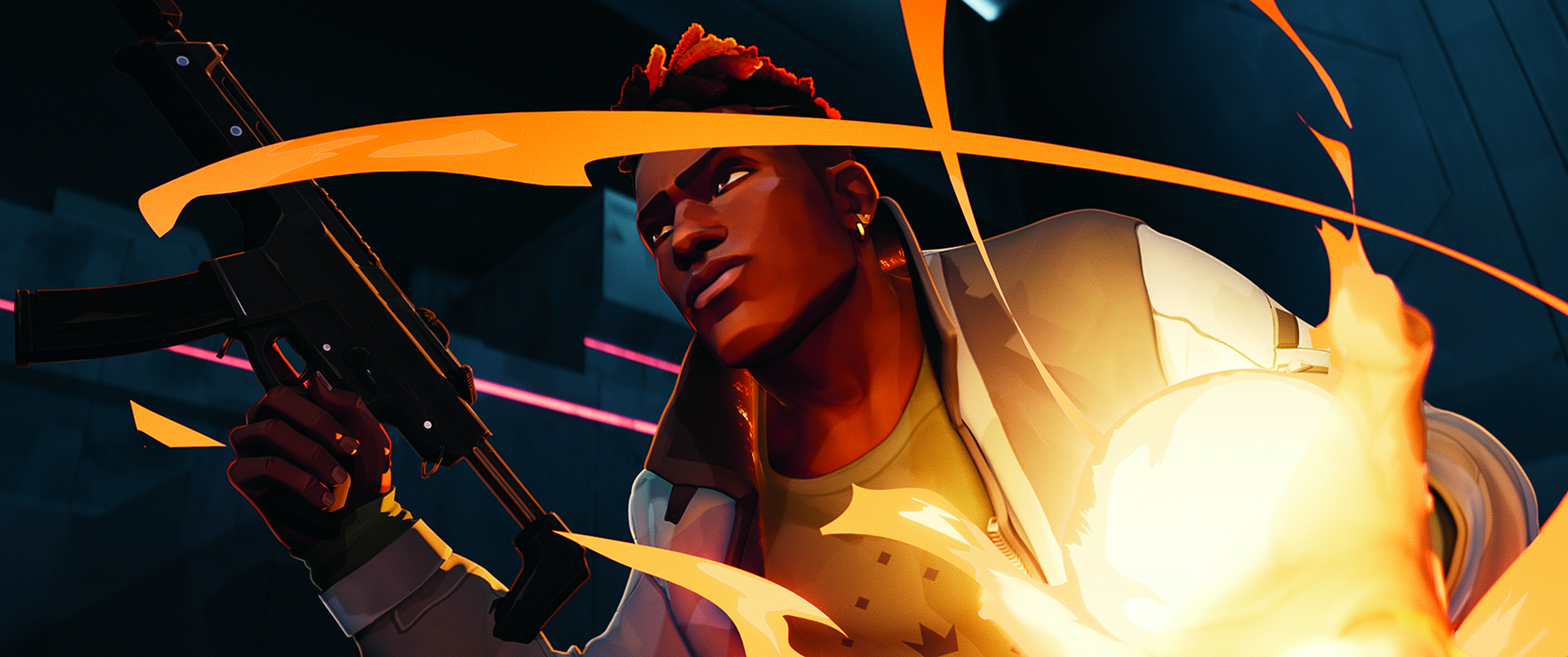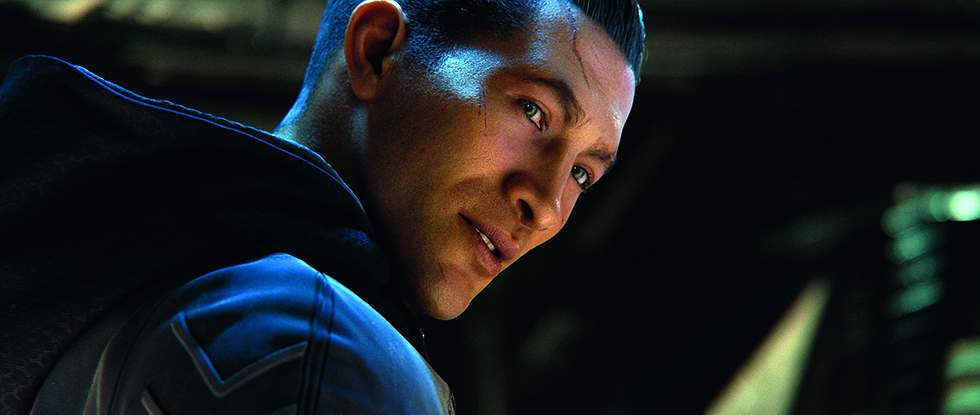How Deadpool's director went from drawing Playboy centrefolds to making hit movies and series
Tim Miller explains how his career evolved and offers some advice for emerging artists.

Tim Miller is best known for directing the original Deadpool movie and for creating the TV series Love, Death & Robots for Netflix and Secret Level for Amazon. But he had a long career in animation and VFX before that.
Miller co-founded Blur Studio 30 years ago and has worked on everything from game trailers and cinematics to title sequences for movies like The Girl with the Dragon Tattoo. He was also nominated for an Academy Award for Best Animated Short Film in 2005 for Gopher Broke. We caught up with him to learn about how his passion for storytelling began.
If you're inspired, see our picks of the best animation software and the best laptops for animation.

Where did you grow up, and how has this impacted your art?
I grew up in the suburbs outside Washington DC, in Fort Washington, Maryland. I had a great childhood with all the usual stuff growing up in the US brings, if you’re lucky enough to have good parents, enough money, and no real trauma.
Most fortunate of all, I’m the child of a huge reader; my dad’s library was like a treasure vault. I was that kid who’d get lost in the worlds of Edgar Rice Burroughs and Robert E. Howard – real pulp adventure stuff. I’d read anything, but those stories were like gateway drugs to my imagination.
And I loved to draw. Comics were my jam because they mashed up the best of both worlds: heroic stories and fantastic art. All that geeking out over art and story set the stage for what I wanted to do.

Outside of art, what has most influenced your work?
Beyond traditional art, my two major influences are genre literature and computer technology. Immersing myself in science fiction and fantasy novels sparked my imagination and ignited a real passion for storytelling beyond the visual within me. Then the emergence of computer technology as an art tool came along, and that completely absorbed me. It offered tools and possibilities that I hadn’t believed were possible.
Equally significant has been the opportunity to work collaboratively with other artists. Co-founding Blur Studio in 1995 as a place for animators and artists to come together was incredibly satisfying.
I’ve learned so much through collaborations with visionaries such as David Fincher on Love, Death & Robots, and James Cameron on The Terminator. Those ideas have altered my perspectives, demonstrating the power of collective creativity when trying to push the boundaries of storytelling.
Were there any important paintings that inspired your formative years?
Like many genre artists from my generation, Frank Frazetta was a massive influence and inspiration. There are so many great paintings, but I’ll pick The Destroyer, a painting done for the cover of a Conan novel.

Can you tell us about your first paid commission?
I can’t remember, actually. I’d draw things, and sometimes my friends would want them. If I had to guess, it was probably a Frazetta or comic cover rip-off, or a Playboy centrefold, which, now I think of it, was likely my fourth great inspiration… like many 13-year-old boys!
What’s the last project you finished?
In my role as a director that would be a Love, Death & Robots short titled The Screaming of the Tyrannosaur. Now I think about it, it has many of the same elements found in Frazetta, comics and Playboy! It’s unsurprising since I still feel like a kid inside.
Is making a living as a creative all you thought it would be?
It’s been much, much more. I didn’t expect to be given as many fantastic opportunities as I have. I’m the luckiest nerd on the planet, and it’s been a wild ride, full of unexpected twists. Growing up, I just loved to draw. I thought I’d end up as an editorial illustrator or helping to create comic books, but breaking in was more challenging than I’d imagined.
That’s when I stumbled upon computer graphics, and it was transformative. This was in the late 80s, and it was all brand new. Eventually, that led to co-founding Blur Studio, where I could blend my love for art and technology.
Projects like Deadpool and Love, Death & Robots have been a dream come true to work on. So, while the path wasn’t what I initially envisioned – is it ever? – it’s been better.

What advice would you give to your younger self to aid you on the way?
I’m not sure I’d do anything different – and I can only offer advice based on what I did that seemed to work, at least for me. And let me say again how much luck played in my opportunities. Anyway, the advice would be to be persistent and grab every opportunity, even if it doesn’t align perfectly with your dreams.
Early on I faced challenges breaking into the comic industry, which led me to explore computer graphics, a field I hadn’t initially considered. This pivot opened doors I never anticipated, eventually leading to projects like Deadpool and Love, Death & Robots. Unexpected paths can lead to great destinations.
Always keep pushing forward, remain adaptable, and don’t hesitate to take that first step, even if it’s not where you envisioned starting.
How has the art industry changed for the better since you started?
It’s so utterly different in terms of capability and technology. Digital tools and computer graphics have revolutionised artistic creation. When Blur Studio started, we were at the forefront of integrating the tech that’s now industry standard. Artists have unprecedented access to software, lessons and online communities today.
This democratisation has lowered the entry barriers, and a diverse range of voices and talents have emerged. The interconnectedness of the internet has made global collaboration the norm.
Artists can work together across continents, and the demand for visual content has grown with the vast numbers of streaming platforms, video games and digital media. This means more opportunity to showcase work and reach wider audiences

What’s your next step?
I’ve always sought ways to tell stories with as much creative freedom as possible. Projects like Love, Death & Robots and Secret Level have allowed me to explore narratives without the typical constraints, collaborating with talented artists to bring stories I find interesting to life.
However, navigating the industry’s gatekeepers remains a soul-draining exercise. I’m continually looking for opportunities to get more autonomy in the work Blur does, seeking partnerships and platforms that allow more art and less bureaucracy. The goal is to keep pushing boundaries and finding new ways to share stories
You can see more of Tim Miller's work with Blur Studio at www.blur.com.
This article originally appeared in ImagineFX. Subscribe to ImagineFX to never miss an issue. Print and digital subscriptions available.
For more inspiration, see our pick of the best CGI movie moments.
Daily design news, reviews, how-tos and more, as picked by the editors.

ImagineFX is the No.1 selling digital art magazine for fantasy and sci-fi enthusiasts! Featuring digital and traditional drawing skills, game design, manga and film art each issue is crammed with training and inspiration from leading artists in their fields. Whether it's learning from comic art's Adam Hughes, fantasy art's John Howe, or digital painting's Loish, ImagineFX has you covered. ImagineFX has been inspiring artists for over 15 years!
You must confirm your public display name before commenting
Please logout and then login again, you will then be prompted to enter your display name.
